Добавить любой RSS - источник (включая журнал LiveJournal) в свою ленту друзей вы можете на странице синдикации.
Исходная информация - http://instaforex.livejournal.com/.
Данный дневник сформирован из открытого RSS-источника по адресу http://instaforex.livejournal.com/data/rss/, и дополняется в соответствии с дополнением данного источника. Он может не соответствовать содержимому оригинальной страницы. Трансляция создана автоматически по запросу читателей этой RSS ленты.
По всем вопросам о работе данного сервиса обращаться со страницы контактной информации.
[Обновить трансляцию]
Russian citizens left without financial support during lockdown |
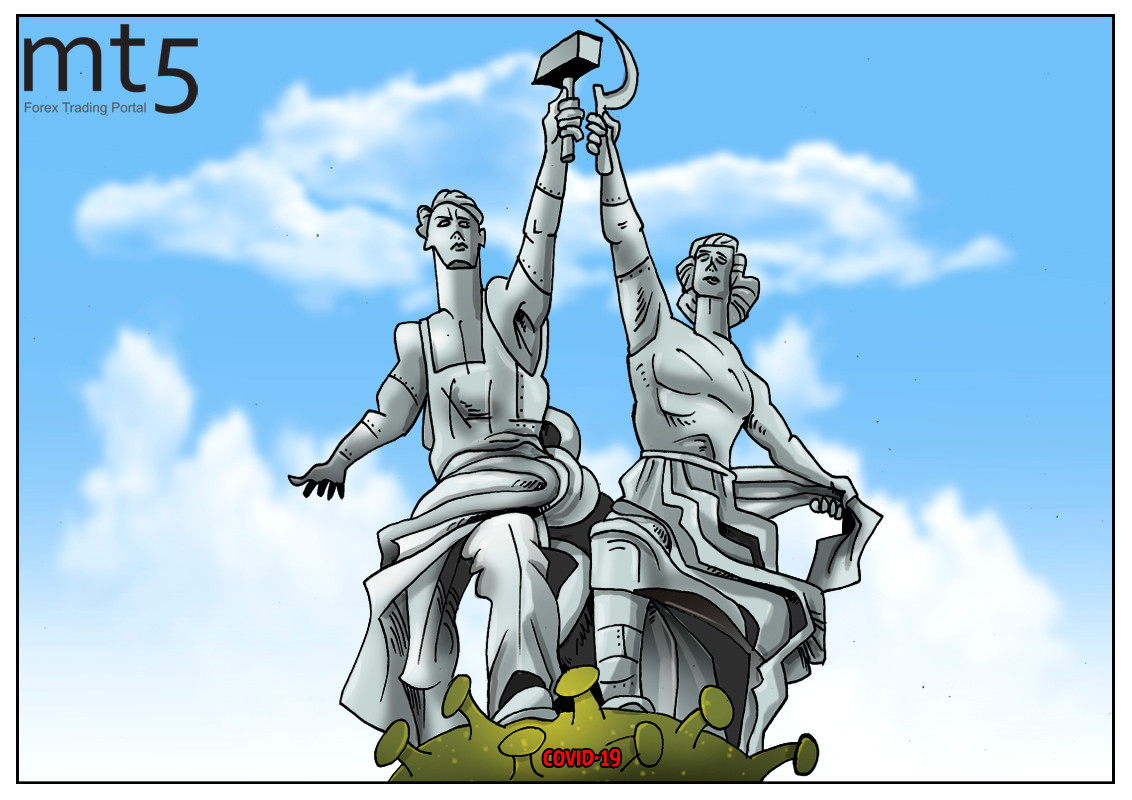
The Russian authorities are going through hard times as the coronavirus outbreak continues to rage across the country. Unfortunately, Putin’s government has proved to be completely helpless to respond to the new viral outbreak and its consequences. Starting from late March, a nationwide lockdown has been imposed in most regions of the country. However, the economic side effects of these restrictive measures have been overlooked by the government. It seems that the Russian authorities have simply shrugged off all the responsibility for the economic fallout and left the citizens handle the situation themselves. While the Western countries are handing out payouts and subsidies for their citizens, the Russian officials seem rather unwilling to do so. Earlier, the government promised to implement the program of interest-free loans intended for small and medium businesses affected by the pandemic. Yet, these supportive measures turned out to be inefficient and highly selective. Thus, even the minister of economic development, acting as a mystery customer, failed to get such a loan in a number of major banks. Reportedly, those companies, considered to be critically important for the national economy, can expect to receive preferential loans. However, this makes little sense as these enterprises are eligible to subsidies anyway being state-owned or even fictitious. In other words, at the moment there is no real support available for small and medium-sized companies. In fact, Russia was completely taken aback by this emergency. As a result, the economic stability is being shattered in every part of the country. So, despite the announced lockdown, some industries still have to operate amid the coronavirus threat. People, left on their own, have no other choice but to continue working as they are worried about their financial future. For instance, Russia’s largest plastic producer Polyplastic Group is operating around the clock seven days a week. Meanwhile, Nornickel, having received a substantial financial aid from the state, resumed the work of its mines as well as GAZ, the Russian automotive manufacturer, continued its operation. The Russian citizens have to work under such conditions risking their health and lives because they see no other way out.
Read more: https://www.mt5.com/forex_humor/image/49446
|
Метки: #forex_caricature |
Russian citizens left without financial support during lockdown |

The Russian authorities are going through hard times as the coronavirus outbreak continues to rage across the country. Unfortunately, Putin’s government has proved to be completely helpless to respond to the new viral outbreak and its consequences. Starting from late March, a nationwide lockdown has been imposed in most regions of the country. However, the economic side effects of these restrictive measures have been overlooked by the government. It seems that the Russian authorities have simply shrugged off all the responsibility for the economic fallout and left the citizens handle the situation themselves. While the Western countries are handing out payouts and subsidies for their citizens, the Russian officials seem rather unwilling to do so. Earlier, the government promised to implement the program of interest-free loans intended for small and medium businesses affected by the pandemic. Yet, these supportive measures turned out to be inefficient and highly selective. Thus, even the minister of economic development, acting as a mystery customer, failed to get such a loan in a number of major banks. Reportedly, those companies, considered to be critically important for the national economy, can expect to receive preferential loans. However, this makes little sense as these enterprises are eligible to subsidies anyway being state-owned or even fictitious. In other words, at the moment there is no real support available for small and medium-sized companies. In fact, Russia was completely taken aback by this emergency. As a result, the economic stability is being shattered in every part of the country. So, despite the announced lockdown, some industries still have to operate amid the coronavirus threat. People, left on their own, have no other choice but to continue working as they are worried about their financial future. For instance, Russia’s largest plastic producer Polyplastic Group is operating around the clock seven days a week. Meanwhile, Nornickel, having received a substantial financial aid from the state, resumed the work of its mines as well as GAZ, the Russian automotive manufacturer, continued its operation. The Russian citizens have to work under such conditions risking their health and lives because they see no other way out.
Read more: https://www.mt5.com/forex_humor/image/49446
|
Метки: #forex_caricature |
Russian citizens left without financial support during lockdown |

The Russian authorities are going through hard times as the coronavirus outbreak continues to rage across the country. Unfortunately, Putin’s government has proved to be completely helpless to respond to the new viral outbreak and its consequences. Starting from late March, a nationwide lockdown has been imposed in most regions of the country. However, the economic side effects of these restrictive measures have been overlooked by the government. It seems that the Russian authorities have simply shrugged off all the responsibility for the economic fallout and left the citizens handle the situation themselves. While the Western countries are handing out payouts and subsidies for their citizens, the Russian officials seem rather unwilling to do so. Earlier, the government promised to implement the program of interest-free loans intended for small and medium businesses affected by the pandemic. Yet, these supportive measures turned out to be inefficient and highly selective. Thus, even the minister of economic development, acting as a mystery customer, failed to get such a loan in a number of major banks. Reportedly, those companies, considered to be critically important for the national economy, can expect to receive preferential loans. However, this makes little sense as these enterprises are eligible to subsidies anyway being state-owned or even fictitious. In other words, at the moment there is no real support available for small and medium-sized companies. In fact, Russia was completely taken aback by this emergency. As a result, the economic stability is being shattered in every part of the country. So, despite the announced lockdown, some industries still have to operate amid the coronavirus threat. People, left on their own, have no other choice but to continue working as they are worried about their financial future. For instance, Russia’s largest plastic producer Polyplastic Group is operating around the clock seven days a week. Meanwhile, Nornickel, having received a substantial financial aid from the state, resumed the work of its mines as well as GAZ, the Russian automotive manufacturer, continued its operation. The Russian citizens have to work under such conditions risking their health and lives because they see no other way out.
Read more: https://www.mt5.com/forex_humor/image/49446
|
Метки: #forex_caricature |
5 countries where solar energy used the most |
Across the globe, more and more countries give their preference to solar energy. Besides, there are a lot of developments in this field, especially in the countries that actively use this renewable source of energy. They come up with new ideas about how it can be enhanced. Such countries set an example for others by offering their experience to less innovative ones.

Nowadays, renewable sources of energy are taking the lead among other sources of energy as they can ensure a more stable and reliable supply of energy. The use of solar energy in manufacturing is increasing. Some countries have long used it and become the leaders in this area. See these countries in our photo gallery

Germany
Germany is one of the first countries to develop and implement solar energy technologies. The long-term transition to clean energy has made the German economy one of the largest in the world. Besides, Germany is hugely dependable on renewable energy as it helps its economy to expand at a faster pace. Notably, the German government plans to use only solar and other renewable sources of energy in the nearest future. As one of the world leaders in promoting solar energy, Germany is strengthening its presence in this industry

China
China is considered the largest consumer of hydrocarbons in the world. Additionally, since 2015 China is a leader in the manufacturing and purchasing of solar panels. The country has got giant solar farms selling power to utility companies. The solar energy interest is surging in China because the country has a great need for electricity. Chinese authorities provide financial support for projects related to solar energy.

Japan
In Japan, there is a significant number of solar panels. What is more, the country is among the leaders in the production of solar energy. After the Fukushima-1 nuclear accident in 2011, solar energy is becoming dominant in this country. Presently, the use of renewable energy has doubled. Floating power generation stations made from water-resistant panels have been established in the country. They are cooled by water. Experts think that such floating solar farms will be soon become widespread.

Italy
Italy has solar farms as well. However, they produce less energy than the German, Japanese, and Chinese ones. In 2017, they generated 25.2 gigawatts of electricity which is 10% of the total electricity consumed by the country. Yet, many of these farms turned out to be unprofitable and had to be closed. Experts believe that in the nearest future, the generation of solar power by Italian solar farms will decline.

US
The United States is also investing in the development of renewable energy sources. The country is among those who use renewable energy the most. The US government is doing its best to encourage companies to use solar energy. For instance, thanks to the governmental programs for the implementation of solar energy in housing and communal services, the consumption of alternative energy by the utility sector rose by 3.9 gigawatts. In the nearest future, experts predict an increase in the number of solar farms.
|
Метки: #photo_news |
Goldman Sachs foresees disastrous COVID-19 effect but in short term |
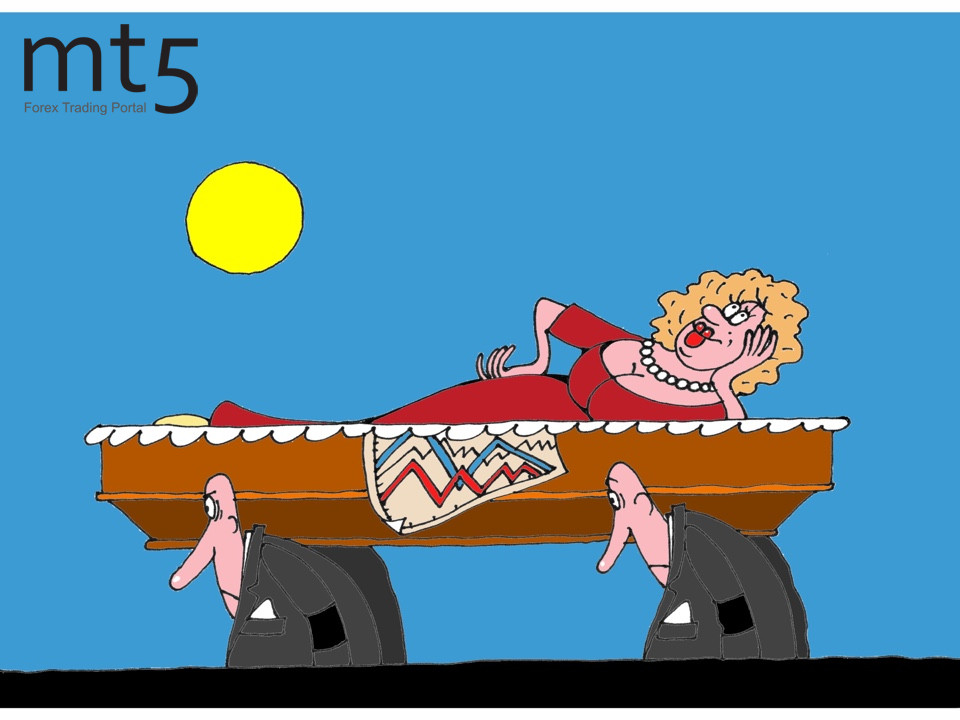
The coronavirus pandemic, which has not loosened its grip yet, forces experts to revise short- and long-term forecasts for the global economy. Analysts at Goldman Sachs Group Inc. have drawn a conclusion that the world is on the verge of drastic changes.
They predict that the fallout from the COVID-19 pandemic will be the least painful to US markets. Experts at Goldman Sachs think that American markets will show the strongest resilience to the profound economic crisis.
The pundits say that the global economy is going to lick its wounds in the first half of 2020. Then, it will enter the phase of a gradual recovery. Zach Pandl, co-head of global foreign exchange and electronic markets at Goldman Sachs, foresees bright prospects for global stocks. The expert believes that the global economy is unlikely to plumb the depths of recession because there are solid fundamentals for regaining momentum.
To prove his words, Zach Pandl reminds traders that almost all global stock indexes have won back most of their losses within just one month after a historic slump in early March. For instance, the American S&P 500 advanced 29% from March 2020. The survey by Goldman Sachs rests on the consensus of GDP expectations. Earlier, the median forecast suggested that the US economy could shrink 4% in 2020, but its gross domestic product could expand 4% next year.
Nevertheless, some reputable think tanks do not share the optimistic outlook of Goldman Sachs. For example, currency strategists at UBS Group AG make opposite forecasts. They warn investors of a protracted recovery in the global economy. Besides, the coronavirus-driven crisis will cast a shadow over the fundamental picture in the long run.
Read more: https://www.mt5.com/forex_humor/image/49372
|
Метки: #forex_caricature |
Five popular utopias in literature |
In literature, utopia is a synonym of a unique imaginary world. Utopia is an elusive dream, an ideal society of the future. The term is translated from Greek as "good place" or "no-place". Many historic and literary figures worked in this genre. Presently, there are many utopian fiction books. Here are the five most popular utopias
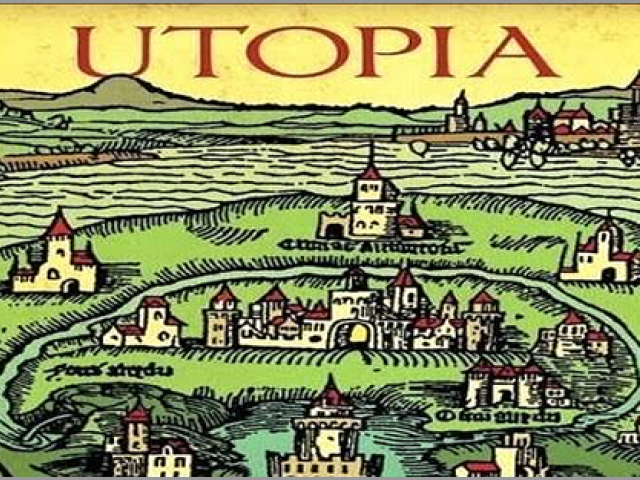
Utopia by Thomas More, 1516
Thomas More, an English politician and humanist, described an extraordinary world in his book which focused on a fictional island Utopia where there was no private property, and benefits were distributed according to the needs of its inhabitants. Labour on this island is a common responsibility. Researchers know for sure that Thomas More wrote about his perfect world relying on Plato's work The Republic. Thereafter, Utopia became a household name.

The City of the Sun by Tommaso Campanella, 1602
In his book The City of the Sun, Tommaso Campanella continued to develop Thomas More’s ideas. A sailor is the narrator in the story who ends up in a mythical city where people live a religious order life. The city’s inhabitants are called the Solarians. They live by simple laws carved on the walls of the temple’s doors. Here, the punishment is applied to coward, negligent, and proud people. The state is in charge of upbringing children. The life purpose in the City of the Sun is intellectual and social improvement of a person.

New Atlantis by Francis Bacon, 1627
In his New Atlantis, Francis Bacon attempted to create an ideal state centered around efficient power mechanism as well as science and human thought development. The English philosopher paid special attention to science seeing it as the main engine of progress and the greater good. In the novel, the men of science are those who run the technocratic world. Some of Bacon’s visions are considered to be prophetic such as aviation, cinematography, undersea boats, genetic engineering, television, and cryogenics.

Looking Backward by Edward Bellamy, 1888
Edward Bellamy offered an amazing version of utopia to humanity. His book describes equality and prosperity. Bellamy’s utopia is no place for commodity and money relations, as well as crime. In this new socialist world, art is used for therapeutic purposes, and an improved education system nurtures altruism in people, where the flourishing of technology makes it all possible. However, the state tightly controls the privacy of its citizens. Looking Backwards became very popular among contemporary readers.

News from Nowhere by William Morris, 1890
In his book, artist and socialist William Morris contradicted the ideas from Bellamy’s Looking Backward. The main character of the book appears in communist England of the future where everything is based on equality and harmony with nature. The key difference of Morris’ utopia is attitude to labour which becomes a goal in itself. Here, handicraft is advancing and people live in communities. The state and marriage become unnecessary. Creative passion is the work incentive in the novel.
|
Метки: #photo_news |
Five popular utopias in literature |
In literature, utopia is a synonym of a unique imaginary world. Utopia is an elusive dream, an ideal society of the future. The term is translated from Greek as "good place" or "no-place". Many historic and literary figures worked in this genre. Presently, there are many utopian fiction books. Here are the five most popular utopias

Utopia by Thomas More, 1516
Thomas More, an English politician and humanist, described an extraordinary world in his book which focused on a fictional island Utopia where there was no private property, and benefits were distributed according to the needs of its inhabitants. Labour on this island is a common responsibility. Researchers know for sure that Thomas More wrote about his perfect world relying on Plato's work The Republic. Thereafter, Utopia became a household name.

The City of the Sun by Tommaso Campanella, 1602
In his book The City of the Sun, Tommaso Campanella continued to develop Thomas More’s ideas. A sailor is the narrator in the story who ends up in a mythical city where people live a religious order life. The city’s inhabitants are called the Solarians. They live by simple laws carved on the walls of the temple’s doors. Here, the punishment is applied to coward, negligent, and proud people. The state is in charge of upbringing children. The life purpose in the City of the Sun is intellectual and social improvement of a person.

New Atlantis by Francis Bacon, 1627
In his New Atlantis, Francis Bacon attempted to create an ideal state centered around efficient power mechanism as well as science and human thought development. The English philosopher paid special attention to science seeing it as the main engine of progress and the greater good. In the novel, the men of science are those who run the technocratic world. Some of Bacon’s visions are considered to be prophetic such as aviation, cinematography, undersea boats, genetic engineering, television, and cryogenics.

Looking Backward by Edward Bellamy, 1888
Edward Bellamy offered an amazing version of utopia to humanity. His book describes equality and prosperity. Bellamy’s utopia is no place for commodity and money relations, as well as crime. In this new socialist world, art is used for therapeutic purposes, and an improved education system nurtures altruism in people, where the flourishing of technology makes it all possible. However, the state tightly controls the privacy of its citizens. Looking Backwards became very popular among contemporary readers.

News from Nowhere by William Morris, 1890
In his book, artist and socialist William Morris contradicted the ideas from Bellamy’s Looking Backward. The main character of the book appears in communist England of the future where everything is based on equality and harmony with nature. The key difference of Morris’ utopia is attitude to labour which becomes a goal in itself. Here, handicraft is advancing and people live in communities. The state and marriage become unnecessary. Creative passion is the work incentive in the novel.
|
Метки: #photo_news |
Bitcoin halving to force weak miners off the market |
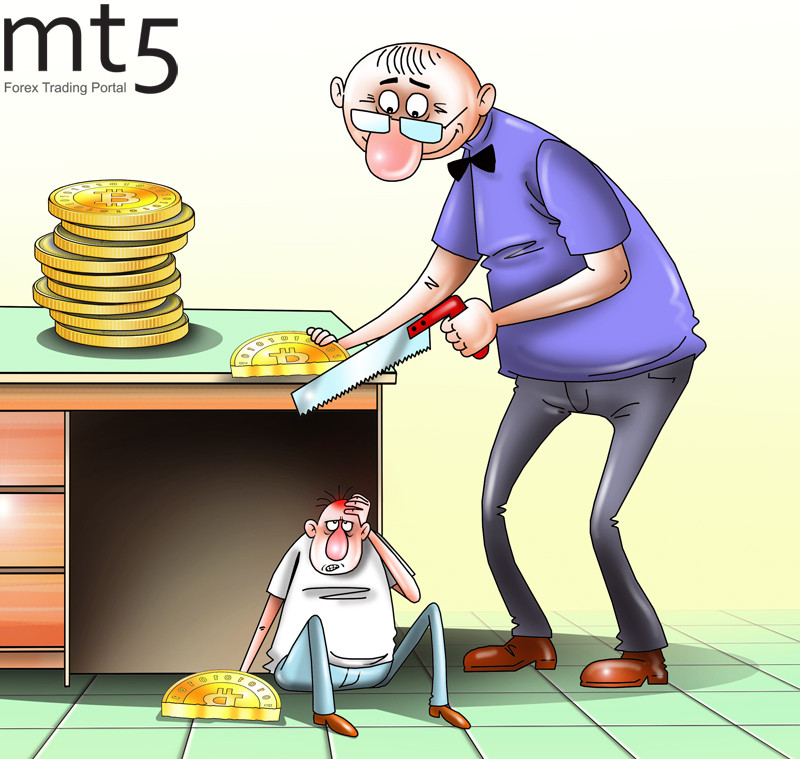
In May 2020, the crypto market is anticipating another bitcoin halving, an important event in the cryptoworld. However, experts fear that this time halving could force the majority of the minors out of the network. The upcoming halving may leave smaller and weaker miners far behind or even lead to their takeovers by the major market participants. BTC halving is a planned reduction in reward miners receive for extracting tokens. Analysts warn that this event may bring significant changes to the current crypto market. In 2020, the block reward will drop to 6.25 BTC from 12.5 BTC. According to Wang Chun, the founder of F2Pool, this reward reduction may “kick out” many miners off the market leaving only the biggest and the most efficient players afloat. Alejandro de la Torre, vice president at Poolin, shares this view and adds that old generation miners are losing their competitiveness. They use outdated and inefficient equipment with high energy consumption and, therefore, they will have to give way to their competitors. Old generation miners will be replaced by large mining farms with advanced equipment and low electricity costs. These market participants are bound to go through the halving, experts believe. Currently, the majority of the large mining companies have access to cheap electricity which is a key factor for making the operation profitable. According to F2Pool managing director, only those farms which can mine bitcoins at a cost less than $3500 will manage to survive. As of April 29, bitcoin was trading at $8,150. Analysts believe that the price of the N1 cryptocurrency is likely to surge on May 12, 2020, when the next bitcoin halving takes place. Their estimates are based on the previous experience when the bitcoin’s price skyrocketed following the halving in 2012 and 2016. However, some crypto enthusiasts think that this time bitcoin has no obvious reasons to rise. According to the previous growth algorithms, its price is likely to jump in the next 1.5 years after the halving. Some cryptocurrency experts fear that the halving event may leave all the power with the major mining companies. This may completely destroy the healthy competition in the crypto market. On the other hand, the bitcoin mining industry may only benefit from the halving as it will continue to advance and will become more professional.
Read more: https://www.mt5.com/forex_humor/image/49315
|
Метки: #forex_caricature |
7 areas impacted by Internet of Things |
Nowadays, the Internet of Things (IoT) dominates the IT industry and is the most popular technology trend. Here are 7 main areas impacted by the IoT

Smart home technology
Devices used in smart homes such as smart light bulbs, smart air conditioners, and smart refrigerators are the most popular examples of the IoT. Experts believe that the smart house technology is one of the most promising areas for the IoT implementation.

Portable devices
Portable is a device attached to a human body and controlled via an app on a smartphone. It reads individual biometric indicators or monitors physical activity of a person. The leading companies in this industry are Apple, Samsung, and Motorola. They develop smart watches, fitness trackers, GPS straps, and smart implants, etc.
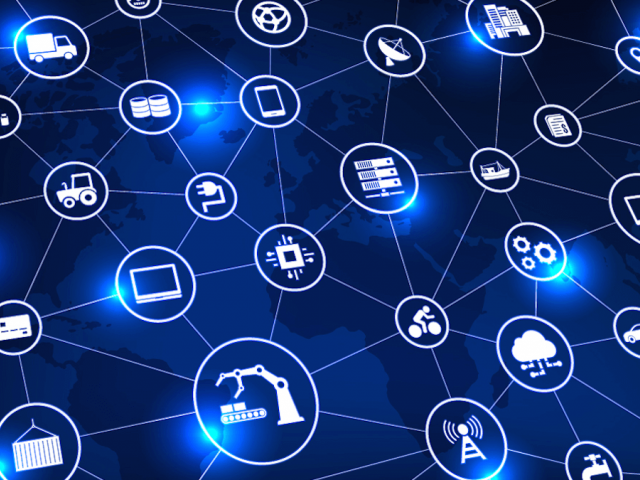
Industrial Internet of Things
The application of the IoT to the manufacturing industry is called the Industrial Internet of Things (IIoT). In the industry, all kinds of sensors, software systems, and big data are most frequently used to develop futuristic designs and accurate calculations. According to analysts, smart machines significantly increase productivity.

Smart machines
Smart machines include self-driving cars, robots, and drones that use artificial intelligence (AI) in order to automate functions which ensure highly effective interaction with the environment and people. According to experts, the rapid expansion of smart machines can lead to a transition from separate self-controlled devices to numerous groups of interacting smart things.

Smart city
Smart city concept provides effective management and high living standards by means of innovative technologies. The idea of its creation appeared in 2008 when IBM developed the scheme of similar megacities. Smart city technologies include smart parking spaces, noise maps, smart lighting and roads. Nowadays, such programs are being implemented in Amsterdam, Barcelona, Madrid, Stockholm, Chicago, Beijing, Dublin, as well as some large cities of Russia.
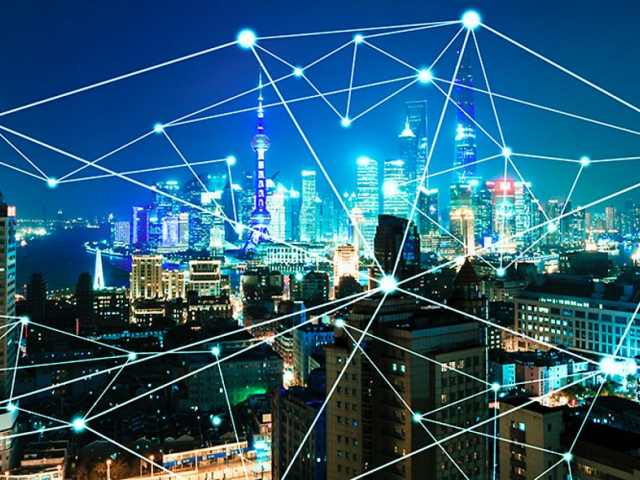
Energy IoT
IoT is also applied in the energy industry. Major companies collect hard data on the amount of resources consumed and develop new customer-oriented services. Experts believe that the IoT can transform the traditional energy industry into a digital one. Smart networks and intellectual meters are widely used in the power engineering. Such networks are able to gather information and instantly analyze electric current circulation.

IoT in healthcare
Healthcare is the most perspective industry for the IoT which allows hospitals to use a personalized approach to patients’ health information and the development of treatment methods. Vital signs monitoring devices are another significant IoT innovation. There is a good chance that, in the future, patients with wearable technology devices will be under supervision of doctors 24/7, so that when patient’s condition changes, a doctor can immediately prescribe treatment.
|
Метки: #photo_news |
7 areas impacted by Internet of Things |
Nowadays, the Internet of Things (IoT) dominates the IT industry and is the most popular technology trend. Here are 7 main areas impacted by the IoT

Smart home technology
Devices used in smart homes such as smart light bulbs, smart air conditioners, and smart refrigerators are the most popular examples of the IoT. Experts believe that the smart house technology is one of the most promising areas for the IoT implementation.

Portable devices
Portable is a device attached to a human body and controlled via an app on a smartphone. It reads individual biometric indicators or monitors physical activity of a person. The leading companies in this industry are Apple, Samsung, and Motorola. They develop smart watches, fitness trackers, GPS straps, and smart implants, etc.

Industrial Internet of Things
The application of the IoT to the manufacturing industry is called the Industrial Internet of Things (IIoT). In the industry, all kinds of sensors, software systems, and big data are most frequently used to develop futuristic designs and accurate calculations. According to analysts, smart machines significantly increase productivity.

Smart machines
Smart machines include self-driving cars, robots, and drones that use artificial intelligence (AI) in order to automate functions which ensure highly effective interaction with the environment and people. According to experts, the rapid expansion of smart machines can lead to a transition from separate self-controlled devices to numerous groups of interacting smart things.

Smart city
Smart city concept provides effective management and high living standards by means of innovative technologies. The idea of its creation appeared in 2008 when IBM developed the scheme of similar megacities. Smart city technologies include smart parking spaces, noise maps, smart lighting and roads. Nowadays, such programs are being implemented in Amsterdam, Barcelona, Madrid, Stockholm, Chicago, Beijing, Dublin, as well as some large cities of Russia.

Energy IoT
IoT is also applied in the energy industry. Major companies collect hard data on the amount of resources consumed and develop new customer-oriented services. Experts believe that the IoT can transform the traditional energy industry into a digital one. Smart networks and intellectual meters are widely used in the power engineering. Such networks are able to gather information and instantly analyze electric current circulation.

IoT in healthcare
Healthcare is the most perspective industry for the IoT which allows hospitals to use a personalized approach to patients’ health information and the development of treatment methods. Vital signs monitoring devices are another significant IoT innovation. There is a good chance that, in the future, patients with wearable technology devices will be under supervision of doctors 24/7, so that when patient’s condition changes, a doctor can immediately prescribe treatment.
|
Метки: #photo_news |
7 areas impacted by Internet of Things |
Nowadays, the Internet of Things (IoT) dominates the IT industry and is the most popular technology trend. Here are 7 main areas impacted by the IoT

Smart home technology
Devices used in smart homes such as smart light bulbs, smart air conditioners, and smart refrigerators are the most popular examples of the IoT. Experts believe that the smart house technology is one of the most promising areas for the IoT implementation.

Portable devices
Portable is a device attached to a human body and controlled via an app on a smartphone. It reads individual biometric indicators or monitors physical activity of a person. The leading companies in this industry are Apple, Samsung, and Motorola. They develop smart watches, fitness trackers, GPS straps, and smart implants, etc.

Industrial Internet of Things
The application of the IoT to the manufacturing industry is called the Industrial Internet of Things (IIoT). In the industry, all kinds of sensors, software systems, and big data are most frequently used to develop futuristic designs and accurate calculations. According to analysts, smart machines significantly increase productivity.

Smart machines
Smart machines include self-driving cars, robots, and drones that use artificial intelligence (AI) in order to automate functions which ensure highly effective interaction with the environment and people. According to experts, the rapid expansion of smart machines can lead to a transition from separate self-controlled devices to numerous groups of interacting smart things.

Smart city
Smart city concept provides effective management and high living standards by means of innovative technologies. The idea of its creation appeared in 2008 when IBM developed the scheme of similar megacities. Smart city technologies include smart parking spaces, noise maps, smart lighting and roads. Nowadays, such programs are being implemented in Amsterdam, Barcelona, Madrid, Stockholm, Chicago, Beijing, Dublin, as well as some large cities of Russia.

Energy IoT
IoT is also applied in the energy industry. Major companies collect hard data on the amount of resources consumed and develop new customer-oriented services. Experts believe that the IoT can transform the traditional energy industry into a digital one. Smart networks and intellectual meters are widely used in the power engineering. Such networks are able to gather information and instantly analyze electric current circulation.

IoT in healthcare
Healthcare is the most perspective industry for the IoT which allows hospitals to use a personalized approach to patients’ health information and the development of treatment methods. Vital signs monitoring devices are another significant IoT innovation. There is a good chance that, in the future, patients with wearable technology devices will be under supervision of doctors 24/7, so that when patient’s condition changes, a doctor can immediately prescribe treatment.
|
Метки: #photo_news |
RUB surprises traders with remarkable resilience |
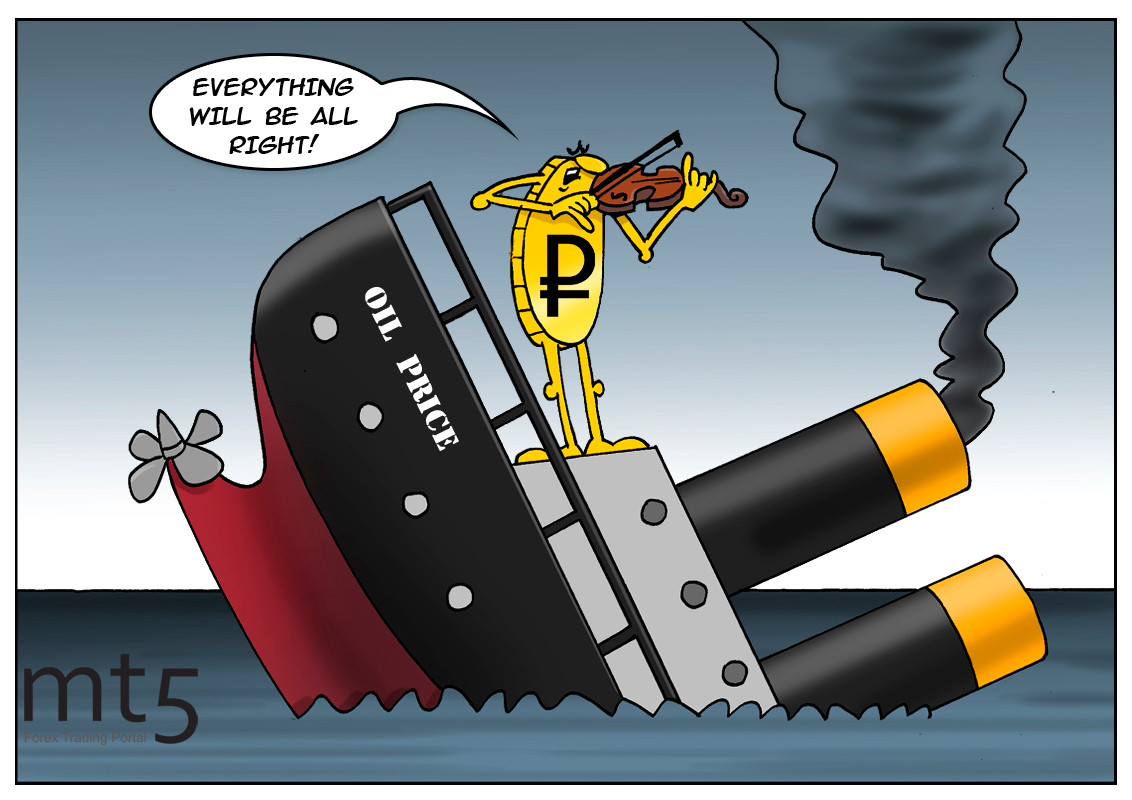
The Russian currency has been weighed down by the havoc in the oil market and the domestic economy. The ruble was brutally bruised by the slump in oil prices. However, having hit multi-year lows, the ruble showed remarkable resilience and managed to regain some losses. Analysts had warned of a steeper nosedive as oil prices tumbled to the lowest levels unseen since late 1990es. However, the ruble surprised market participants with its better than expected dynamic. Moreover, some analysts make cautiously optimistic forecasts, betting on its rise in the medium term despite the ruble’s vulnerability to oil market jitters. In fact, oil has already gone through the stage of negative values and it is expected to rebound to $20-30 a barrel. Thus, the ruble is set to pick up steam. Besides, it has been propped up by a series of forex interventions. The Bank of Russia made a wise decision to buy up the national currency at its extreme lows, bearing in mind its imminent appreciation. The latest statistics on the forward exchange market shows that most traders predict the ruble’s strength. The number of long positions on the ruble is twice as big as the number of short deals: 845,000 versus 450,000. Another weighty argument for the ruble’s strength is OPEC+ pact on oil production cuts which will come into force from May. Such developments are certainly bullish for the Russian currency.
Read more: https://www.mt5.com/forex_humor/image/49222
|
Метки: #forex_caricature |
Countries With Highest Standard of Living |
According to experts from the consulting company the Henley & Partners, the combination of internal and external factors of the countries' development help to derive the Quality of Nationality Index (QNI).
It scores the nations on a scale from 0 to 100 as well as estimates citizenships on the basis of visa-free access.
Find out the countries ranked with the highest scores in our photo gallery
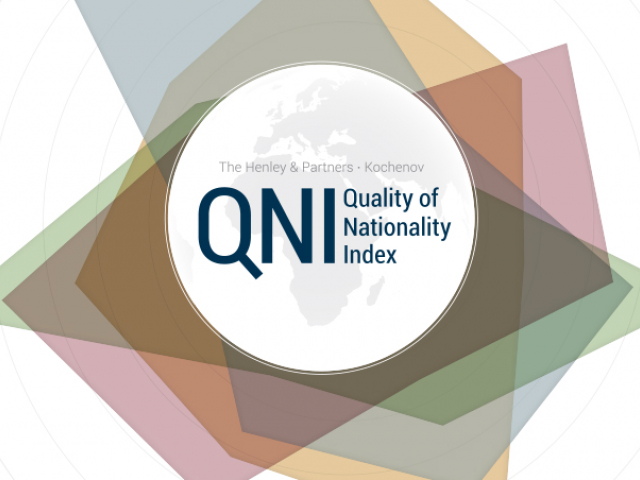
The QNI takes into account various factors in order to compile the rating. Each factor influences significantly the quality of life. The internal factors include economic strength, human development, and peace and stability. The external factors are the diversity of travel freedom and the opportunities the holder of nationality can get outside the country of origin.
Overall, the list consists of 167 countries. They are divided into five parameters that reflect their strong and weak spots. All countries in the ranking have the highest score (75-100%). The material is based on information from 2018 as data for the end of 2018 and the beginning of 2019 is still being collected.

Austria – 78.9%
Having lost 1.0% compared to 2016, Austria took the 10th place in the Henley & Partners ranking.
The procedure of obtaining an Austrian passport is not an easy one. However, it is definitely worth trying as Austrian citizenship gives a lot of benefits. The best way for an immigrant to get citizenship is to launch a business and invest in the real sector of the economy at least €6-10 million. Such an investment will lead to the creation of new jobs in the country as well as increase the amount of taxes received by the Treasury.
In return, the Austrian government guarantees immigrants and their families the best international education, first-class medical care and the right to cross the borders of more than 150 countries without any hindrance.
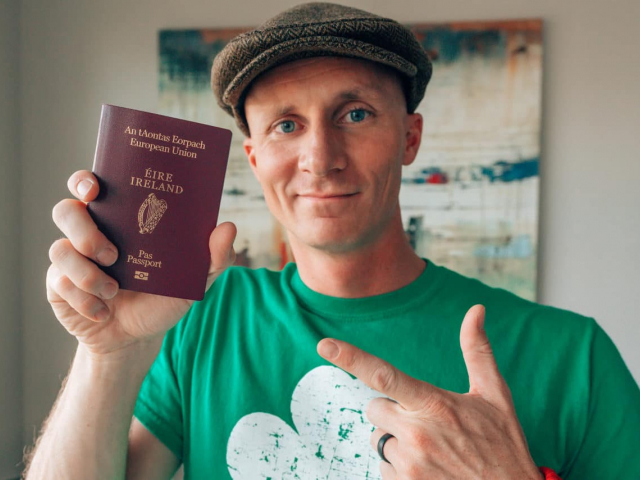
Ireland -79.0%
Ireland lost 0.4% compared to the previous year and came in a ninth place replacing Spain. At the end of 2017, Spain was shifted from 10th place to 11th.
The number of people wishing to obtain an Irish passport is steadily growing after the Brexit referendum. It is not surprising as Irish citizenship enables its holder to freely enter the territory of more than 169 countries in the world.
Besides, the Irish authorities give the right to get second citizenship without giving up the native one. This factor makes Ireland more appealing for the immigrants as well.
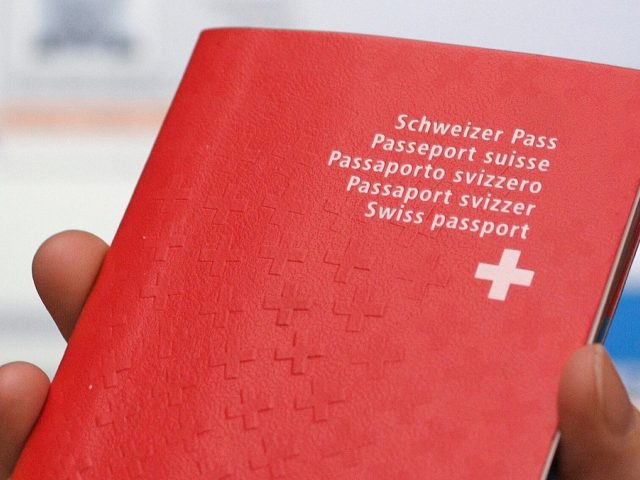
Switzerland-79.0%
The ninth place in this ranking is occupied by Switzerland.
In recent years, the country has tightened the conditions for issuing passports. For instance, it is obligatory to live in the country for 12 years in a row. Another way to obtain citizenship is to conclude an agreement with the local authorities on the payment of the accord tax (a tax taken not from your profit but from your expenditures on the territory of the country).
If you do not interfere in the economy of the country and pay off your bills regularly, you can enjoy all the benefits of a highly developed European country.
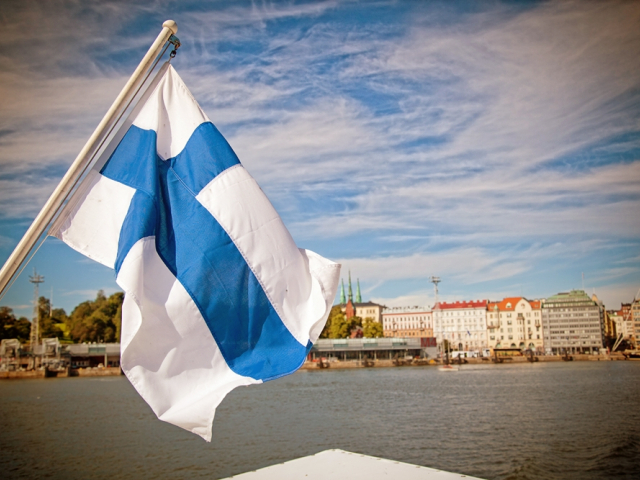
Finland – 79.2%
At the end of 2017, Finland was down by -1.5% in the rating mainly due to economic problems. Nonetheless, the country was included in the top 10 and ranked the eighth along with Italy.
In Finland, the standard of living and wages are higher than in other European countries. In addition, after obtaining a Finnish passport, you can apply for a well-paid job, start a business in the country and throughout the European Union without any restrictions.

Italy– 79.2%
Italy occupies the eighth place along with Finland in this ranking. The country lost only a 0.7% score compared to 2016. The looming economic crisis can be determined as the main reason for the decrease. However, in general, life in Italy is calm and has a lot of benefits.
With Italian citizenship, you can freely cross the borders of the Schengen area and beyond. It also provides access to many public competitions, including grants for starting a business. Moreover, Italian citizens living outside the country are included in the AIRE list and may be exempt from certain taxes. They lose the right to receive medical services, though.

Sweden – 80.0%
The seventh place of the rating goes to Sweden. The country lost 1.2% in this rating. Nevertheless, Sweden is considered economically stable and peaceful country despite the difficult situation with the integration of migrants who arrived in the country a few years ago.
As for the citizens of Sweden, they have a lot of countries to choose from as their passport allows them to travel to EU countries without a visa.
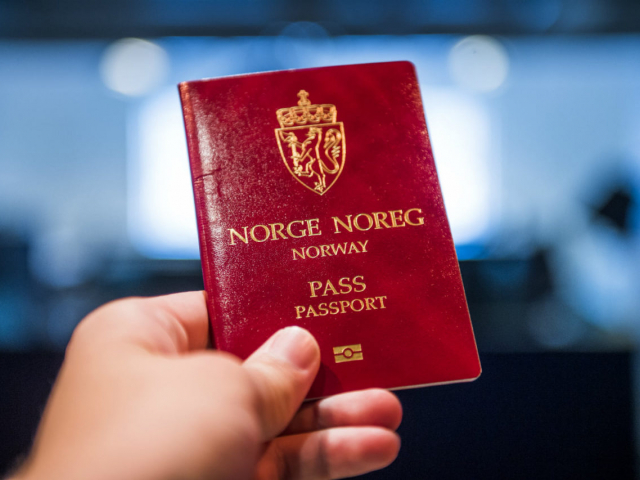
Norway – 80.4%
Such a peaceful country as Norway has a strong social policy and visa-free regime with many countries. Additionally, Norway consistently holds the leading positions among the countries according to the Human Development Index for many years.
Even after a slight downgrade of a score by 0.6% in 2017, Norway was included in the top 10 prosperous countries, locating at the sixth place. Thus, being a Norwegian brings loads of advantages to your life as well as opportunities to work and live in one of the leading European countries.
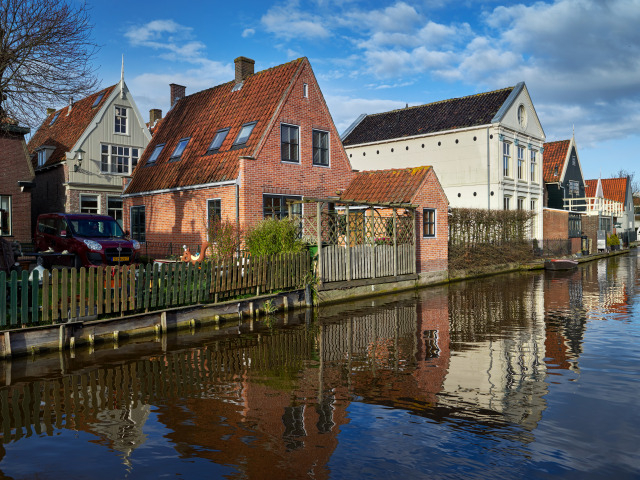
Netherlands – 80.8%
The Netherlands has managed to occupy the fifth line of the rating for many years.
Unlike some other European countries, the Netherlands does not allow its citizens to have dual nationality. However, the government welcomes those who are willing to contribute (usually at least €250,000) to the Dutch economy.
Residents of the Netherlands have access to social and tax benefits, highly qualified medical services, as well as the top universities in Europe. With Dutch citizenship, you can visit 171 countries in the world without a visa.

Iceland – 81.5%
In 2017, Iceland another country with a very high standard of living added 0.2 to its previous rating and came in the third place.
Iceland can boast of a high level of social security, free medical care, free access to education, and a high employment rate among EU countries.
Despite the strict immigration policy aimed at preserving the national identity, the Icelandic government provides comfortable living conditions for all who have sufficient grounds to obtain an Icelandic passport.

Denmark – 80.9%
Denmark, whose latest rating was 1.5% lower than the previous one, took the fourth place in the ranking.
The government actively attracts investments in the Danish economy with an amount of at least €50,000 per year. Plus, such an amount of money is supposed to be enough for an entrepreneur to succeed. Obtaining dual citizenship is possible but not welcome. However, in recent years, the rules have been simplified due to the adaptation of immigrants policy.
Citizens of Denmark can visit many developed world countries without a visa. Danish citizens also have a high standard of living and many social guarantees. What is more, they can count on high standards of safety and medicine as well as on the access to free higher education.
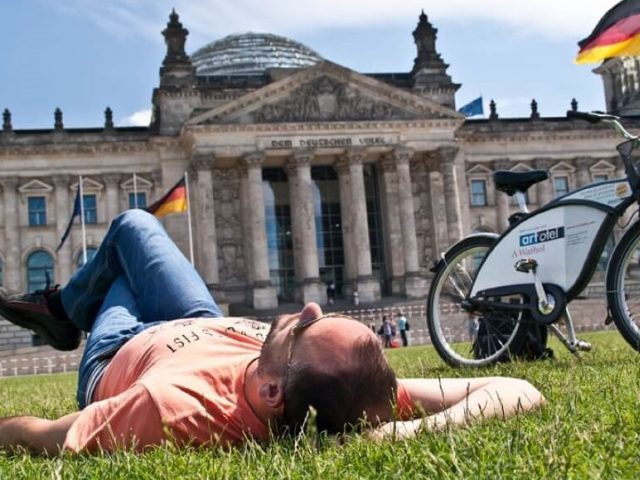
Germany – 81.6%
Germany gave in its leading position to France because of the protests caused by the flow of migrants. Having lost 1.2%, the country managed to hold the second place in this ranking.
First of all, Germany opens its doors to qualified personnel. In return, the country allows obtaining a second citizenship and visa-free travel to the EU. The social security of German citizens is at a high level. Besides, it is a good place to launch a business and then expand it to other EU countries.

France– 81.7%
In 2017, France has taken over Germany’s leading position for the first time in five years with a smaller than Germany's drop in the ranking (by 0.8%). The country is known for its high level of social protection, free education, and quality health care.
France has always received immigrants allowing them to have dual citizenship. With a French passport, you can visit 175 countries.

Russia- 40,5%
At the end of 2017, Russia gained 0.8% in the rating and took 63rd place out of 167.
The living standard of the country is estimated by the Henley & Partners as high. However, the advantages of Russian citizenship are quite controversial even despite steps towards a visa-free regime with different countries.
|
Метки: #photo_news |
Huawei Q1 revenue growth slows sharply |
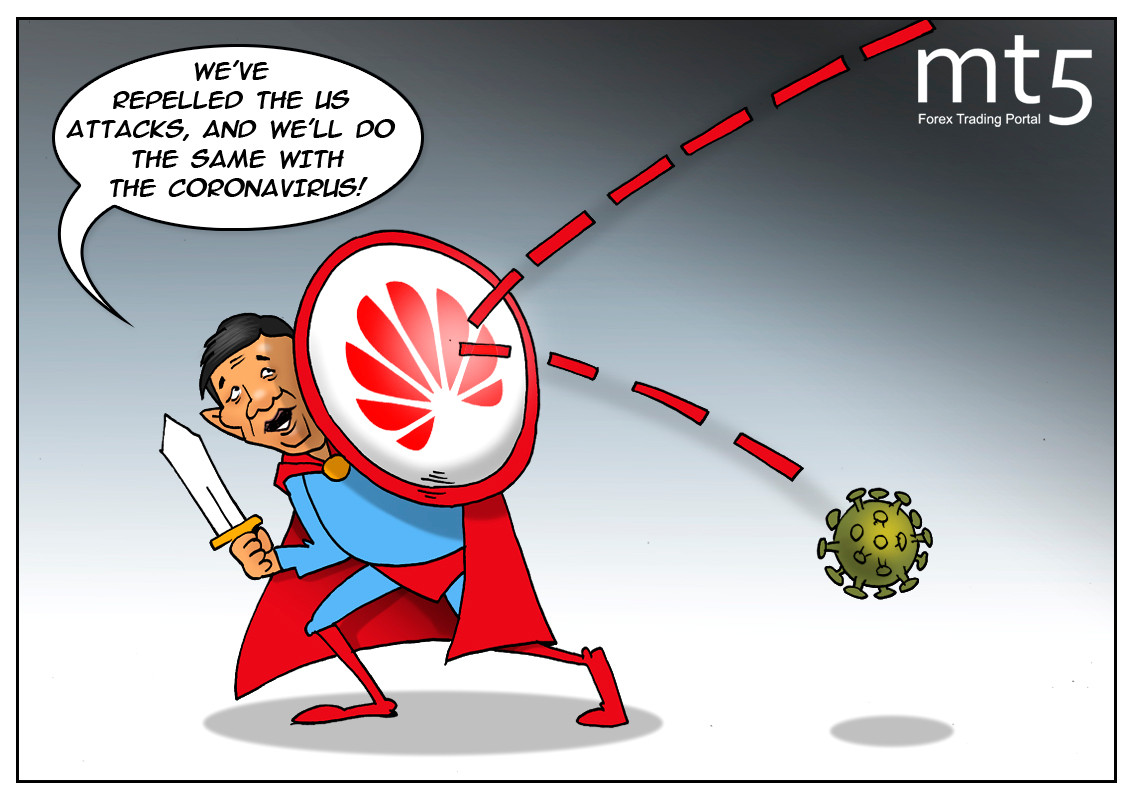
Another company that has reportedly benefited from the US sanctions is China's tech giant Huawei Technologies. Recall that the largest telecommunications equipment manufacturer was at the heart of the real espionage scandal, which revealed that the allegedly private commercial company was actually one of the divisions of the Chinese state security services. Moreover, Huawei was accused of producing the equipment that could be exploited by Beijing for spying. After this fact was disclosed, the US authorities imposed sanctions against Huawei and encouraged its allies around the world to be more careful when concluding contracts with the tech company or even shun them. In response, the management of Huawei made an optimistic statement about its ability to derive a benefit from the sanctions slapped by Washington. Optimism was observed at all levels - from owners and executives to ordinary specialists. However, the company's financial performance report showed quite the opposite. Huawei's first-quarter revenues rose by less than 1% compared to 39% a year ago. Its net profit margin for this period slipped to 7.3%. The business sentiment also changed, and not for the better. Now the company predicts that "2020 will be the most difficult year." According to the tech giant's management, the United States does not take any steps to ease trade restrictions. Moreover, Huawei Technologies sees the ongoing effort by the United States to convince other countries to ban it from participating in the deployment of 5G.
Read more: https://www.mt5.com/forex_humor/image/49182
|
Метки: #forex_caricature |
Top 10 popular professions of future |
Over the next decade, the labour market will change drastically . According to experts, entirely new types of professions will take the lead in the market. See the jobs that will gain popularity in 2023-2025 in our photo gallery

Bioengineer
Nowadays, more and more students are eager to study bioengineering at university. Bioengineers are scientists who study living organisms and develop new biological forms. Bioengineers use innovative technologies in biology and medicine to deal with health issues.

VR designer
A VR designer creates conceptual solutions for a virtual world. This includes the new reality with its own principles, unusual rules of social interaction, innovative forms of economy, space landscapes, and fantastic architecture, etc.

Biopharmacologist
This unusual profession appeared at the confluence of biology, pharmacology, and computer inventions. Biopharmacologist is engaged in the development of new biopharmaceuticals. These medications are made with the help of biological technology. Biopharmacologists study and analyse data in molecular biology and pharmacology using the software.

Designer of smart environment
Nowadays, a designer of a smart environment has become a highly popular profession. A designer of a smart environment develops self-operating technologies with the automated control function. For example, smart houses can supervise automatic devices inside their spaces. They can turn on and off the equipment on time and buy food online, etc.

Cyber security specialist
A cybersecurity specialist is responsible for the development, support and upgrading services to protect information systems. Cyber security specialist provides the reliability of the digital environment and its protection against hacker attacks and data breach. They are also engaged in the investigation of cybercrime.
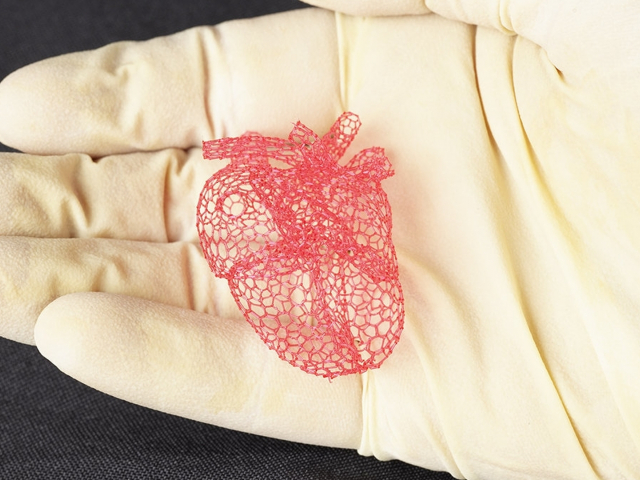
3d printing engineer
A 3d printing engineer designs 3d projections with the use of mathematics and creativity. These specialists are in demand in different spheres, such as architecture, construction, medicine, as well as clothing, and shoe industry.

Neuropsychologist
A neuropsychologist is a psychologist who works with the human brain. This profession is connected to psychology and neuroscience. Neuropsychologists study principles of brain functioning in correlation with mental processes, and human behaviour.

Alternative energy specialist
A distinctive feature of this profession is searching for alternative sources of energy and their further utilization. A renewable energy engineer is another profession in the field of alternative energy. These specialists develop and implement systems that work on solar and wind power.

Robot technician
Over the last couple of years, a robot technician has become one of the most popular professions. A robot technician designs and maintains robots for various economic spheres. The technician is also engaged in comprehensive work with automated engineering systems.

Full stack developer
Nowadays, a full stack developer is a very popular profession along with an IT developer. Experts believe that it will not lose its importance in the near future. Moreover, it will be in demand as a result of the increased digitization of the economy.
|
Метки: #photo_news |
British economy to shrink by 30% due to COVID-19 |
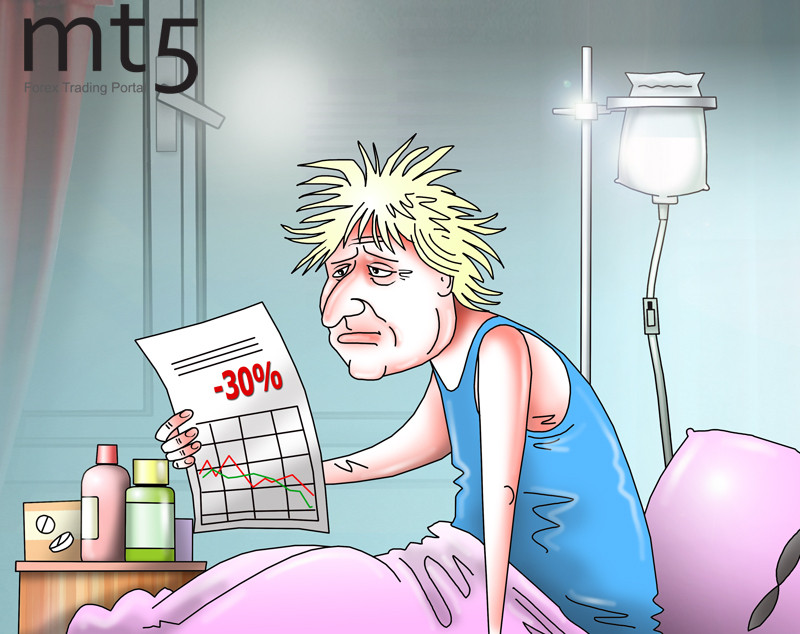
The British economy is under great pressure now due to the rapidly growing number of COVID-19 cases and deaths from the infection. Hopes that the situation will improve soon and the lockdown restrictions will be eased are waning with every day. According to analysts, the UK GDP is expected to shrink by 30% in the first quarter. Such a sharp drop in economic growth is explained by a huge death toll caused by the coronavirus outbreak. By April 15, the number of deaths had surpassed 10,000. UK Prime Minister Boris Johnson went down with the virus infection as well. The UK is now at risk of becoming a new epicenter of the disease with the largest number of confirmed cases. In early April, Boris Johnson was admitted to St Thomas’ Hospital where he spent one week including three days in the intensive care unit. Shortly after that, the British authorities faced severe criticism over slow and insufficient coronavirus testing, the shortage of protective equipment for medical workers, and for a delayed response to the epidemic. Boris Johnson has been discharged from hospital. He is still undergoing rehabilitation and has not immediately returned to work, though. Currently, UK Foreign Minister Dominic Raab is deputising for Boris Johnson. The contradictions within the current economic policy of the country make things even worse. The British government has faced a dilemma over how to tackle the coronavirus crisis. The authorities have to make a difficult choice of prioritizing between health care and the needs of the UK economy. The decision may become crucial for the country's future development, experts stress. Earlier, Rishi Sunak, the British finance minister, warned that GDP could contract by 20-30% between April and June 2020. Notably, Rishi Sunak advocates for lifting the lockdown restrictions and reopening the economy as soon as possible. However, others resist this move for fear of further escalation of the coronavirus outbreak. HM Treasury allocated the emergency funding of 14 billion pounds ($17 billion) for public services to support the coronavirus-hit economy. The Treasury is expected to allocate additional funding for the National Health Service and for local authorities that provide social care for elderly people. The situation with small and medium-sized businesses is far less optimistic. A total of 300,000 firms have applied for financial aid but only 4,200 companies have received rescue loans under the government’s business support scheme.
Read more: https://www.mt5.com/forex_humor/image/49132
|
Метки: #forex_caricature |
Hyperinflation records in history |
Venezuela's Parliament estimated that consumer inflation came in at a whopping 1,698,488% in 2018. The government headed by Nikolas Maduro, who was re-elected for a second 6-year term in early 2019, has not posted any official statistics since 2015. High inflation rates have been recorded in the country since 2014, but the ailing economy has been in grip of the galloping inflation since 2016.
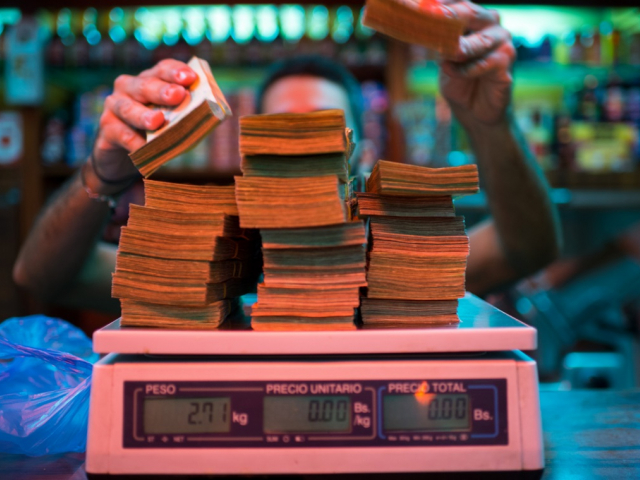
Hyperinflation is the case when inflation jumps 50% and over on month. So, on a daily basis inflation in Venezuela was slightly above 1% in 2018. In fact, prices grew much faster as in the early 2018, inflation was estimated at a few hundred percent on a yearly basis. Amid hyperinflation, shop assistants did not attach price tags at grocery stores because prices could rise significantly within the day. Thus, people and firms found a solution to use eggs as a means of payment. As eggs contain a lot of protein, they are considered a valuable product.
Read about six cases of appalling hyperinflation in our photo gallery. Unlike Venezuela where hyperinflation is assessed in annual terms, inflation rates in other countries are estimated on a monthly basis.

China, 1949, daily inflation of 14%
Hyperinflation struck China in 1947. It reached its peak in 1949 when consumer prices were soaring 5,070% per pay. Hyperinflation flared up during the civil war. China’s national party, Guomindang, decided to print more banknotes to ensure government spending during the military conflict with the Communist Party.
As a result, consumer prices doubled every 3-5 days. Prices of basic consumer goods and food skyrocketed by a hundred thousand times. Printed notes had no more value than waste paper. People were forced to use rice as a means of payment. After China had introduced the yuan, inflation rates were gradually stalling ahead of 1955.

Greece, 1944, daily inflation of 18%
Greece’s economy was devastated by the Nazi’s occupation during World War II.As a result, the collapse in the agriculture entailed serious food shortages. Besides, a relief of tax burden was also to blame for high inflation. Even though it was not as galloping as inflation in post-war Hungary or Germany, Greece needed a longer time to tame it and achieve some stability in the ailing economy.
The Greeks found a solution to spend drahmas within 4 hours. Before, the natives used to keep a drahma banknote for up to 40 days. According to the hyperinflation chart composed by Steve Hanke and Nicholas Krus, consumer prices doubled every 4.3 days. The highest rate on month, recorded in October 1944, was estimated at 13,800%.
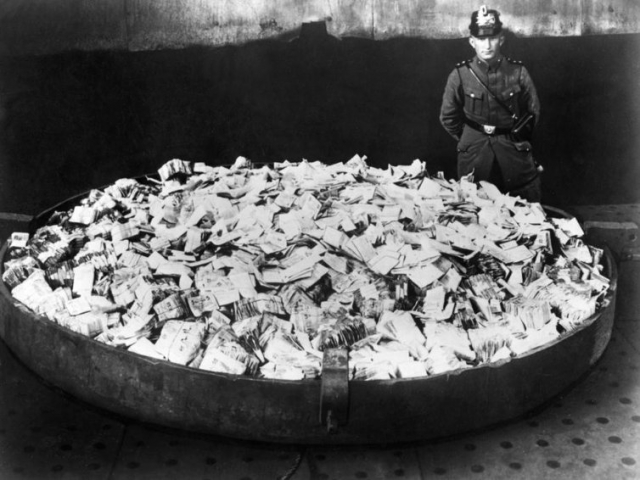
Germany, 1923, daily inflation of 21%
This is the most odious case in history. Following World War I, Germany’s economy was crippled by an enormous public debt and reparations. The government decided to print Deutsche Mark notes aiming to buy the reserved currency and to repay its debts. The national currency was losing in value at the same pace as the central bank printed more and more Deutsche Mark bills. Consumer prices doubled every 3.7 days. Inflation reached its peak in October 1923 that was 29,500% month-on-month.

A loaf of bread had a price tag of 250 Deutsche Marks in January 1923, but the price skyrocketed to 200 billion Deutsche Marks in November. Banknotes were burnt instead of fuel or logs to heat furnaces and were used instead of wallpaper. People were paid so huge packs of notes which did not fit into a suitcase. The Germans rushed to spend their wages on the day of their receipt as this money would lose virtually all of its value next day.
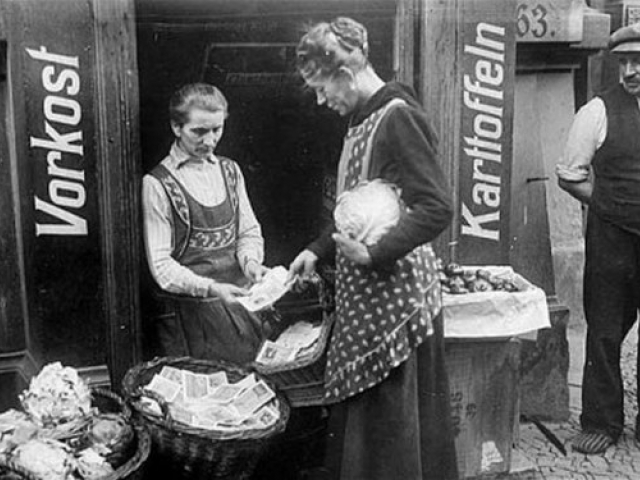
The BBC cited someone’s memoirs that once this person left his suitcase stuffed with wages unattended. Later, the man found out that the suitcase had been stolen, but the money had been left. Another man went to Berlin to buy a pair of new shoes. However, on his arrival that money was enough to buy a cup of coffee and a return ticket by bus. In late 1923, the government introduced annuity bonds which were backed by agricultural resources. This move propped up consumer prices. Besides, Germany’s lenders agreed to restructure wartime payments.

Yugoslavia, 1994, daily inflation of 65%
By 1992, Yugoslavia consisted only of Serbia and Montenegro remained in after other countries had withdrawn from it. The state treasury was depleted by armed conflicts and the collapse in the domestic market. So, the government set about printing banknotes. Erratic public spending, corruption, and the UN sanctions slapped in 1992/93 triggered hyperinflation. Its peak was recorded in January 1994 – 313,000,000%.
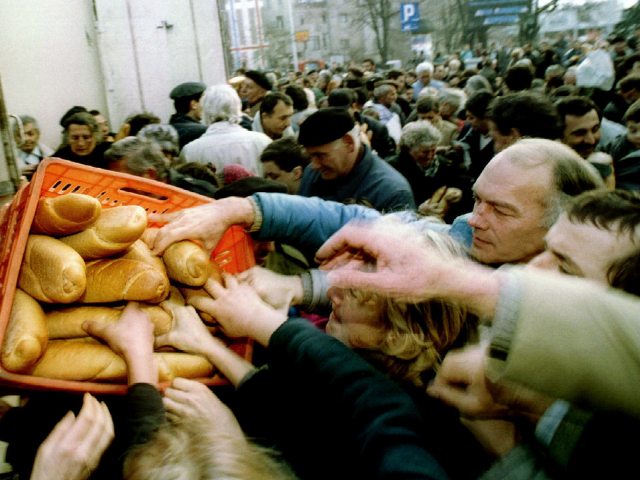
Prices were swelling every 34 hours. The nationals of the Balkan country had to spend money as soon as they were paid wages. Some people went to Hungary to buy basic goods. The inflation problem was worsened by maladministration which disabled the work of all public institutions. As a result, people failed to pay utility bills in a due time as the amount stated there lost its value in a flash.
Pushing ahead with the idea of terminating sanctions, Serbia’s leader Slobodan Milosevic adopted a new currency, the new dinar, secured by the gold and forex reserves.

Zimbabwe, 2008, daily inflation of 98%
After Zimbabwe had gained independence in 1980, the new national currency valued at nearly $1.25 was introduced. In early 2000-ies, President Robert Mugabe launched the land reform which in fact was the redistribution of land by compulsory seizure of the farmland belonging to ethnic Europeans in favor of the Zimbabwean folks. Actually, the authorities wrecked prosperous farms. Besides, the domestic economy suffered the US and EU sanctions imposed in 2002.
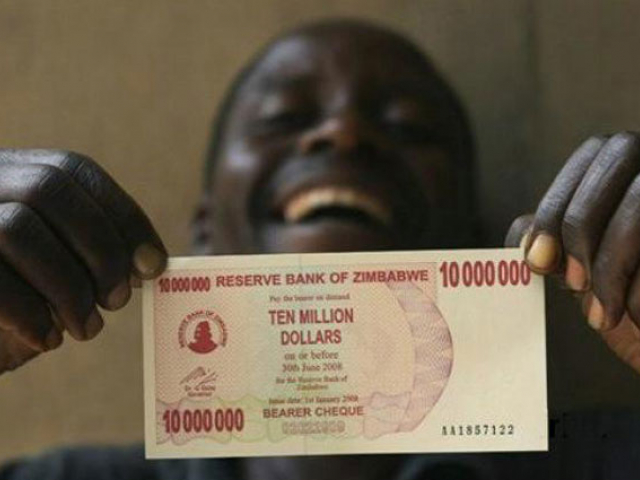
In 2007, landlords had to charge the rent by groceries. A room rent was paid as follows: 10 kilos of corn flour, 2 kilos of baking flour, 4 liters of oil, 10 packs of toilet paper, and 2 kilos of sugar. In 2008, a bunch of 10 bananas cost 10 billion Zimbabwean dollars. Banknotes were virtually worthless, so they were used as bookmarks or stickers.
In November 2008, inflation came in at 79 billion percent. Prices grew twice every 25 hours. A loaf of bread in the capital city cost 200 billion Zimbabwean dollars. In the same year, the authorities shifted to US dollars to stamp out rampant inflation.

Hungary, 1946, daily inflation of 207%
The worst case of hyperinflation was recorded in Hungary. In 1927, the government launched a new currency unit, the peng"o, to revive the national economy after World War I and tame inflation. The Great Depression devastated Hungary’s economy. The swelling public debt forced the central bank to devalue the national currency in an effort to cover public spending.
By the start of World War II, the domestic economy was in dire straits. The central bank gave in to the government which ordered to print bank bills without any limits.
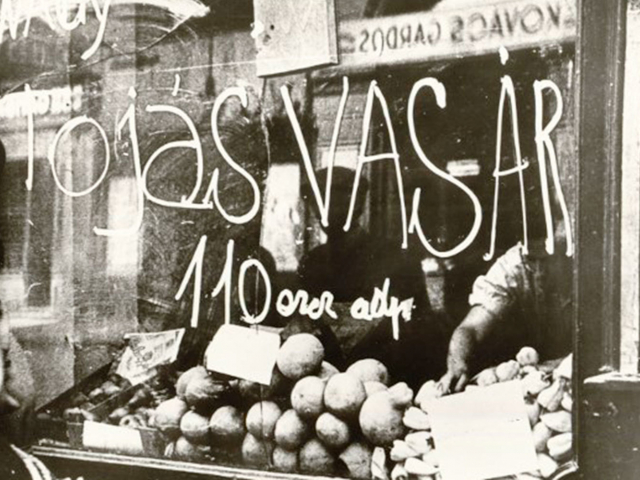
Hyperinflation reached appalling rates as prices spiked twice every 15 hours. In July 1946, the inflation was 41.9 quadrillion percent! The authorities came up with the only solution. They introduced a new currency – the forint.
When this happened in August 1946, the total amount of all Hungarian banknotes in circulation equaled 0.001 of the US dollar.
|
Метки: #photo_news |
Hyperinflation records in history |
Venezuela's Parliament estimated that consumer inflation came in at a whopping 1,698,488% in 2018. The government headed by Nikolas Maduro, who was re-elected for a second 6-year term in early 2019, has not posted any official statistics since 2015. High inflation rates have been recorded in the country since 2014, but the ailing economy has been in grip of the galloping inflation since 2016.

Hyperinflation is the case when inflation jumps 50% and over on month. So, on a daily basis inflation in Venezuela was slightly above 1% in 2018. In fact, prices grew much faster as in the early 2018, inflation was estimated at a few hundred percent on a yearly basis. Amid hyperinflation, shop assistants did not attach price tags at grocery stores because prices could rise significantly within the day. Thus, people and firms found a solution to use eggs as a means of payment. As eggs contain a lot of protein, they are considered a valuable product.
Read about six cases of appalling hyperinflation in our photo gallery. Unlike Venezuela where hyperinflation is assessed in annual terms, inflation rates in other countries are estimated on a monthly basis.

China, 1949, daily inflation of 14%
Hyperinflation struck China in 1947. It reached its peak in 1949 when consumer prices were soaring 5,070% per pay. Hyperinflation flared up during the civil war. China’s national party, Guomindang, decided to print more banknotes to ensure government spending during the military conflict with the Communist Party.
As a result, consumer prices doubled every 3-5 days. Prices of basic consumer goods and food skyrocketed by a hundred thousand times. Printed notes had no more value than waste paper. People were forced to use rice as a means of payment. After China had introduced the yuan, inflation rates were gradually stalling ahead of 1955.

Greece, 1944, daily inflation of 18%
Greece’s economy was devastated by the Nazi’s occupation during World War II.As a result, the collapse in the agriculture entailed serious food shortages. Besides, a relief of tax burden was also to blame for high inflation. Even though it was not as galloping as inflation in post-war Hungary or Germany, Greece needed a longer time to tame it and achieve some stability in the ailing economy.
The Greeks found a solution to spend drahmas within 4 hours. Before, the natives used to keep a drahma banknote for up to 40 days. According to the hyperinflation chart composed by Steve Hanke and Nicholas Krus, consumer prices doubled every 4.3 days. The highest rate on month, recorded in October 1944, was estimated at 13,800%.

Germany, 1923, daily inflation of 21%
This is the most odious case in history. Following World War I, Germany’s economy was crippled by an enormous public debt and reparations. The government decided to print Deutsche Mark notes aiming to buy the reserved currency and to repay its debts. The national currency was losing in value at the same pace as the central bank printed more and more Deutsche Mark bills. Consumer prices doubled every 3.7 days. Inflation reached its peak in October 1923 that was 29,500% month-on-month.

A loaf of bread had a price tag of 250 Deutsche Marks in January 1923, but the price skyrocketed to 200 billion Deutsche Marks in November. Banknotes were burnt instead of fuel or logs to heat furnaces and were used instead of wallpaper. People were paid so huge packs of notes which did not fit into a suitcase. The Germans rushed to spend their wages on the day of their receipt as this money would lose virtually all of its value next day.

The BBC cited someone’s memoirs that once this person left his suitcase stuffed with wages unattended. Later, the man found out that the suitcase had been stolen, but the money had been left. Another man went to Berlin to buy a pair of new shoes. However, on his arrival that money was enough to buy a cup of coffee and a return ticket by bus. In late 1923, the government introduced annuity bonds which were backed by agricultural resources. This move propped up consumer prices. Besides, Germany’s lenders agreed to restructure wartime payments.

Yugoslavia, 1994, daily inflation of 65%
By 1992, Yugoslavia consisted only of Serbia and Montenegro remained in after other countries had withdrawn from it. The state treasury was depleted by armed conflicts and the collapse in the domestic market. So, the government set about printing banknotes. Erratic public spending, corruption, and the UN sanctions slapped in 1992/93 triggered hyperinflation. Its peak was recorded in January 1994 – 313,000,000%.

Prices were swelling every 34 hours. The nationals of the Balkan country had to spend money as soon as they were paid wages. Some people went to Hungary to buy basic goods. The inflation problem was worsened by maladministration which disabled the work of all public institutions. As a result, people failed to pay utility bills in a due time as the amount stated there lost its value in a flash.
Pushing ahead with the idea of terminating sanctions, Serbia’s leader Slobodan Milosevic adopted a new currency, the new dinar, secured by the gold and forex reserves.

Zimbabwe, 2008, daily inflation of 98%
After Zimbabwe had gained independence in 1980, the new national currency valued at nearly $1.25 was introduced. In early 2000-ies, President Robert Mugabe launched the land reform which in fact was the redistribution of land by compulsory seizure of the farmland belonging to ethnic Europeans in favor of the Zimbabwean folks. Actually, the authorities wrecked prosperous farms. Besides, the domestic economy suffered the US and EU sanctions imposed in 2002.

In 2007, landlords had to charge the rent by groceries. A room rent was paid as follows: 10 kilos of corn flour, 2 kilos of baking flour, 4 liters of oil, 10 packs of toilet paper, and 2 kilos of sugar. In 2008, a bunch of 10 bananas cost 10 billion Zimbabwean dollars. Banknotes were virtually worthless, so they were used as bookmarks or stickers.
In November 2008, inflation came in at 79 billion percent. Prices grew twice every 25 hours. A loaf of bread in the capital city cost 200 billion Zimbabwean dollars. In the same year, the authorities shifted to US dollars to stamp out rampant inflation.

Hungary, 1946, daily inflation of 207%
The worst case of hyperinflation was recorded in Hungary. In 1927, the government launched a new currency unit, the peng"o, to revive the national economy after World War I and tame inflation. The Great Depression devastated Hungary’s economy. The swelling public debt forced the central bank to devalue the national currency in an effort to cover public spending.
By the start of World War II, the domestic economy was in dire straits. The central bank gave in to the government which ordered to print bank bills without any limits.

Hyperinflation reached appalling rates as prices spiked twice every 15 hours. In July 1946, the inflation was 41.9 quadrillion percent! The authorities came up with the only solution. They introduced a new currency – the forint.
When this happened in August 1946, the total amount of all Hungarian banknotes in circulation equaled 0.001 of the US dollar.
|
Метки: #photo_news |
RUB stuck at historic lows amid havoc in oil market |

In April, the Russian ruble deserves applause for its faint attempts to regain footing. Apart from the COVID-19 pandemic, Russia’s authorities are to blame for the crater in the oil market which sent the ruble into a tailspin. Having hit historic lows, the Russian currency has been creeping upward. An 8-day fragile climb does not mean that the ruble has won back most of its earlier losses. However, the pro-Kremlin media presented this as the ruble’s remarkable resilience amid global market jitters. In fact, the new long-awaited OPEC+ deal on oil production cuts failed to prop up oil prices contrary to market expectations. Both Russian and foreign analysts warn of bleak prospects for the ruble’s recovery. Being vulnerable to the state of affairs in the oil market, the ruble will be able to gain momentum on condition that oil prices rebound at least to $45 – 50 per barrel which might happen only in the medium term. Nowadays, a sharp contraction in global energy demand amid the coronavirus pandemic has generated a glut in the oil market. As most countries are carrying on with lockdown measures, energy demand is set to remain low. Experts at Goldman Sachs predict that Brent crude will pull back to $20 per barrel. To make things worse, Saudi Arabia is not going to terminate the oil price war with Russia. Recently, Riyadh made big discounts on May contracts for its key markets. Against this background, the ruble has got stuck firmly at multi-year lows.
Read more: https://www.mt5.com/forex_humor/image/49060
|
Метки: #forex_caricature |
6 alternative indexes to estimate economic welfare |
As a rule, many people consider the world economy a sophisticated and brain-cracking subject that is full of complex calculations and pyramids of letter equations. However, as it turns out it is not so black as it is painted. The economy even has a sense of humor when it comes to economic indexes that reflect the standard of living. Apart from the well-known indexes, e.g. the Big Mac Index, there are many others that may surprise you and even make you laugh. Read about alternative economic indexes in our article

Latte index
Some people cannot imagine their life without a cup of aromatic coffee. This beverage is recognized as one of the most popular in the world. For this reason, Starbucks, the famous coffee chain, proposed to measure the level of well-being and solvency of the population using the Latte index – the most popular coffee drink.

Borscht index
This is the most famous alternative index in Ukraine. This index with a funny name has become widely known outside the country. The cost of borscht is calculated by the price of the following ingredients: 300 g of pork, 500 g of potatoes, 500 g of beets, 200 g of carrots, 300 g of cabbage, 200 g of onions, 90 g of tomato paste, 30 g of sunflower oil, and 200 g of sour cream. These ingredients will be enough for 5 liters of soup. The cost of all ingredients is summed up and the total amount of money spent on cooking borscht is obtained. Hence, this index measures the cost of food year-on-year.

Khachapuri index
In Georgia, economists measure the well-being of citizens by using the most popular Georgian food, the Khachapuri. They call it the Khachapuri index. The Khachapuri index requires the ingredients that are needed to cook one khachapuri: 250 g of flour, 100 g of cheese, 50 g of yeast, 75 ml of milk, 1 egg, and butter (vegetable and cream), sugar, and salt. The use of gas and electricity is also included in the price. In 2019, the Khachapuri index reached a historic high due to a 12% fall in the exchange rate of the lari (the currency of Georgia) and an increase in food prices.

Bad Habits index
Deutsche Bank quite often creates one of the funniest indexes that offer a non-standard approach to measuring the population welfare. It regularly publishes original and try-not-to-laugh indexes such as the Dating index, the Cappuccino index, the Car rental index, etc. However, most often experts at Deutsche Bank use the Bad Habits index that includes a set of five bottles of beer and two packs of cigarettes.

iPhone index
Experts at the Commonwealth Bank of Australia came up with their own formula for measuring the welfare of citizens. They created a new iPod index based on the iPod Nano 2Gb model. However, by now, this indicator is outdated, and the creators of the index have replaced the iPod with the iPhone index.

Olivier Salad index
Despite its French name, this index is widely used in Russia. Experts took the combined cost of the salad ingredients such as 500 g of canned cucumbers, 380 g of peas, 500 g of potatoes, 200 g of carrots, 4 eggs, 300 g of cooked sausage, 100 g of onions, and 200 g of mayonnaise to measure the inflation. Usually, this index comes in handy when the New Year is around the corner as Olivier salad is a must-have on the Russian New Year table.
|
Метки: #photo_news |






